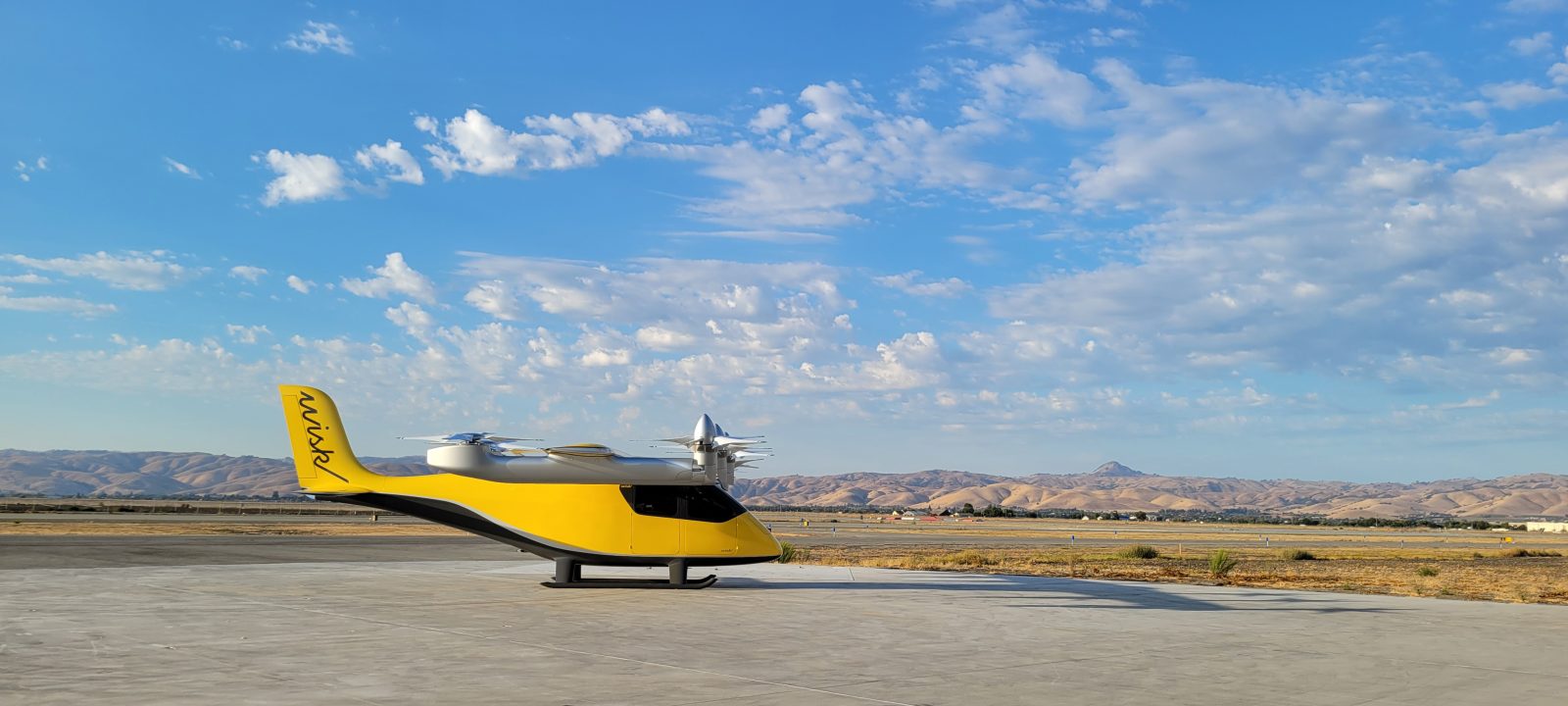
Wisk, the Boeing-backed developer of electric takeoff and landing (eVTOL) air taxis, has unveiled its sixth-generation passenger aircraft it calls the “first self-flying, all-electric, four-passenger… candidate for type certification” from the Federal Aviation Administration (FAA).
That claim to precedence appears based largely on Wisk’s eVTOL conception of its future air taxi operating autonomously while monitored by ground-based obervers. That contrasts rival craft manufacturers working toward FAA certification, notably Joby and Archer, whose configurations call for onboard pilots. The new-look plane also features a simplified design, fewer moving parts, and a purported operational efficiency that will limit cost to $3 per passenger/mile.
Read: Wisk and Boeing unveil UAM operational roadmap for future air taxis
Unlike competitors further along in their eVTOL development efforts, Wisk is still relatively early in the certification process of its air taxi with the FAA. It says, however, the new iteration of the craft will serve that purpose and be the model it eventually takes to market. Powered by 12 propellers, the new version is tailored to welcome passengers with limited accessibility, and offer safe, scalable operation.
The news comes just two weeks after company co-backer Kittyhawk announced it was halting its own internal activities developing air taxi and other flying car tech, but would continue to support Wisk’s eVTOL work. The new version of the craft draws on the five previous generations Wisk produced since its 2010 founding, and draws on insight co-owner Boeing attained while creating automated pilot technology said to be used in 93% of commercial flights today.
That reliance on proven, safe aviation systems in its eVTOL, Wisk says, reduces the risk of one of its air taxis having an accident to “one-in-a-billion.” Company CEO Gary Gysin says its own experience, combined with the century of aviation history Boeing brings to the project, has produced its best prototype yet.
“In 2010, we set out to find a way to skip traffic and get to our destination faster,” said Gysin. “That inspiration evolved into a mission to deliver safe, everyday flight for everyone. Over the past 12 years, we’ve pursued that mission through the development of five different generations of full-scale aircraft. Our 6th generation aircraft is the culmination of years of hard work from our industry-leading team, learnings from our previous generations of aircraft, commitment from our investors, and the evolution and advancement of technology.”
Read: Wisk gets $450 million for eVTOL air taxi certification push
Specs of Wing’s new eVTOL describe a future four-seat air taxi that will attain cruising speed of 120 knots over a range of 90 miles, and altitudes of between 2,500 and 4,000 feet. The company did not offer an expected timeline for its FAA type certification program when it presented the revamped plane.
FTC: We use income earning auto affiliate links. More.



Comments